As my time here at the Mariners’ Museum comes to a close, I’ve realized that I know our collection very well, but I only know a little about our exhibitions. I want to use my last couple of weeks here to discuss some of our exhibitions and explore them for myself! For my first one I looked at the Age of Exploration.
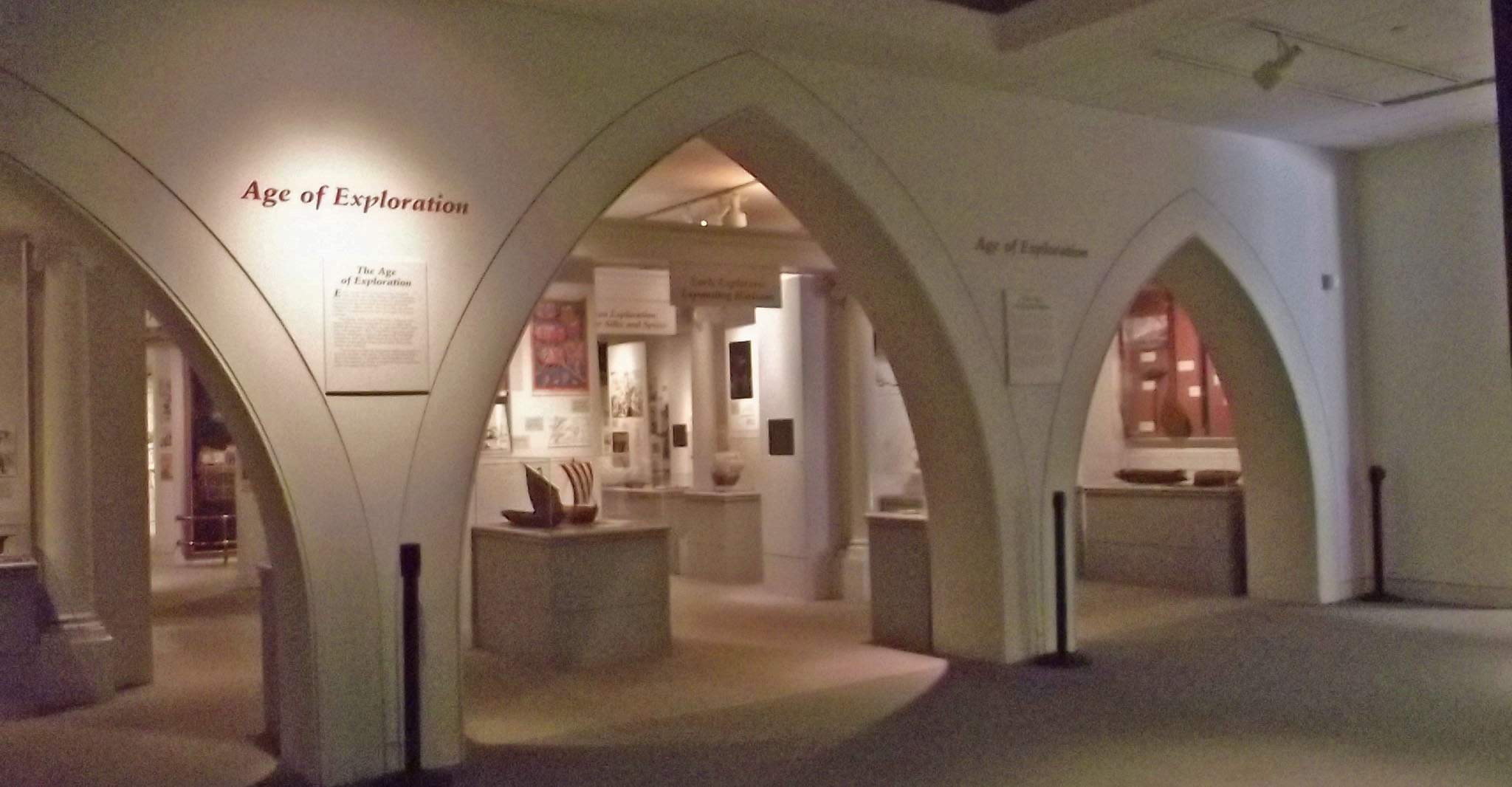
We all learn about the explorers who sailed the Atlantic in the 15th-17th centuries at a young age. Here at the Mariners’ Museum, we have a great collection of exploration artifacts and a VERY thorough explanation of this era in history. While the amount of stuff in the gallery may be a little overwhelming, there is a wealth of information to go with it.
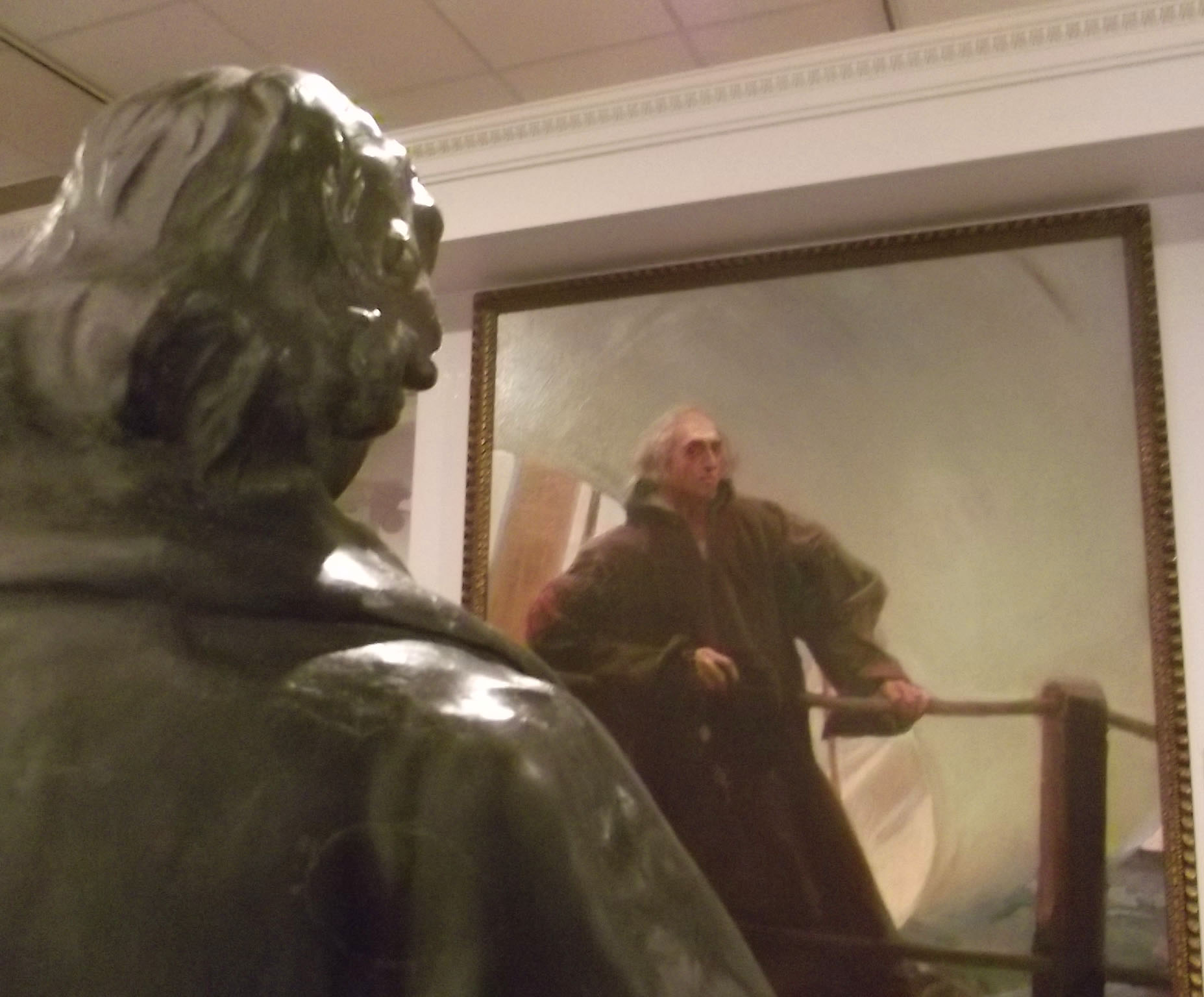
My favorite part of the exhibition is the interactive opportunities. There are many quick games (which was obviously my favorite part) that will keep children (and 22 year old interns) occupied. These little features are key to keeping the exhibition up to date and relevant in the world of museums, not only because they are fun but because they keep children engaged and interested.
As I mentioned earlier, the exhibition is full of artifacts and information related to exploration. It was hard to just choose specific pieces of the collection, but I couldn’t share the entire exhibition with you or else you would have no reason to come visit!
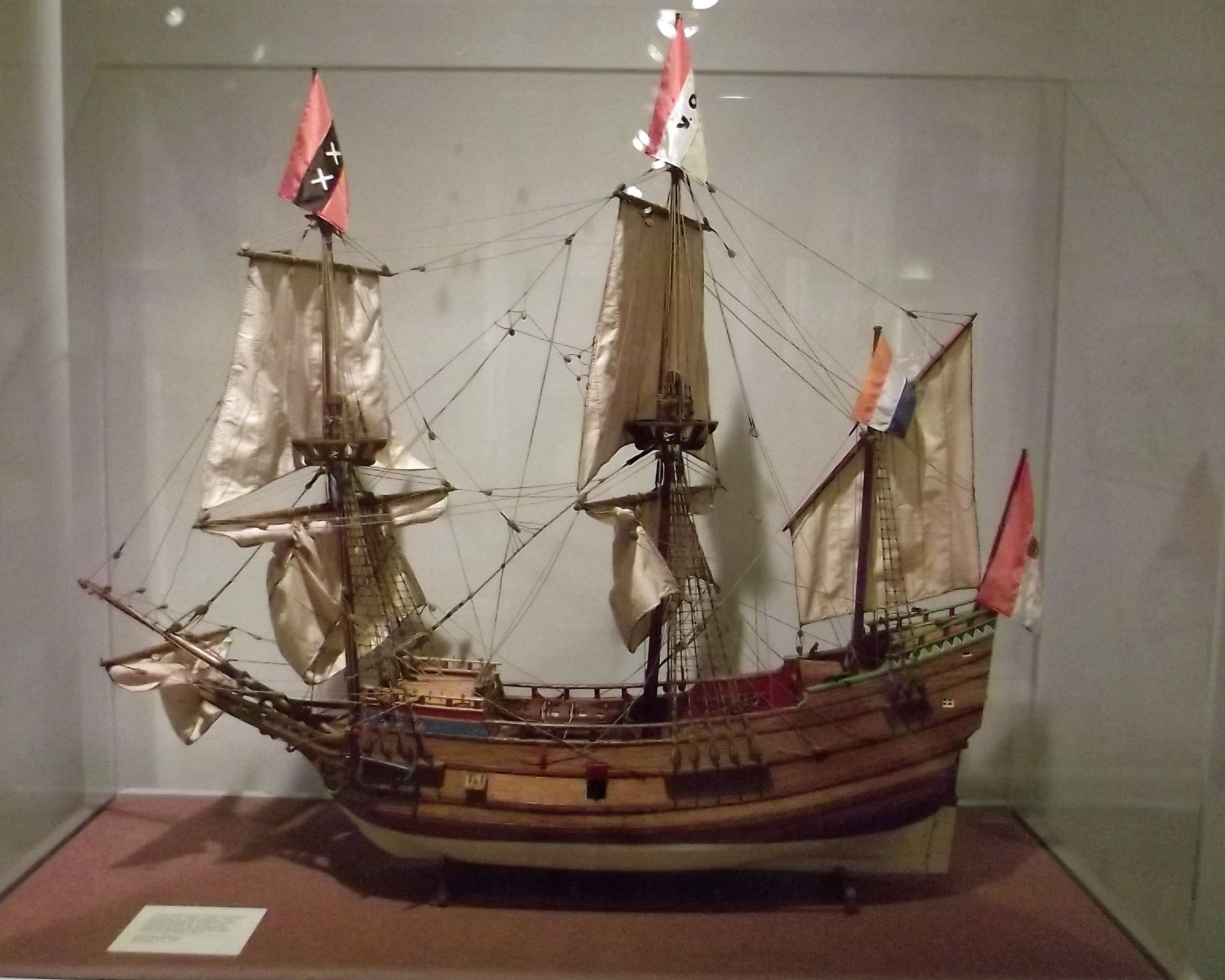
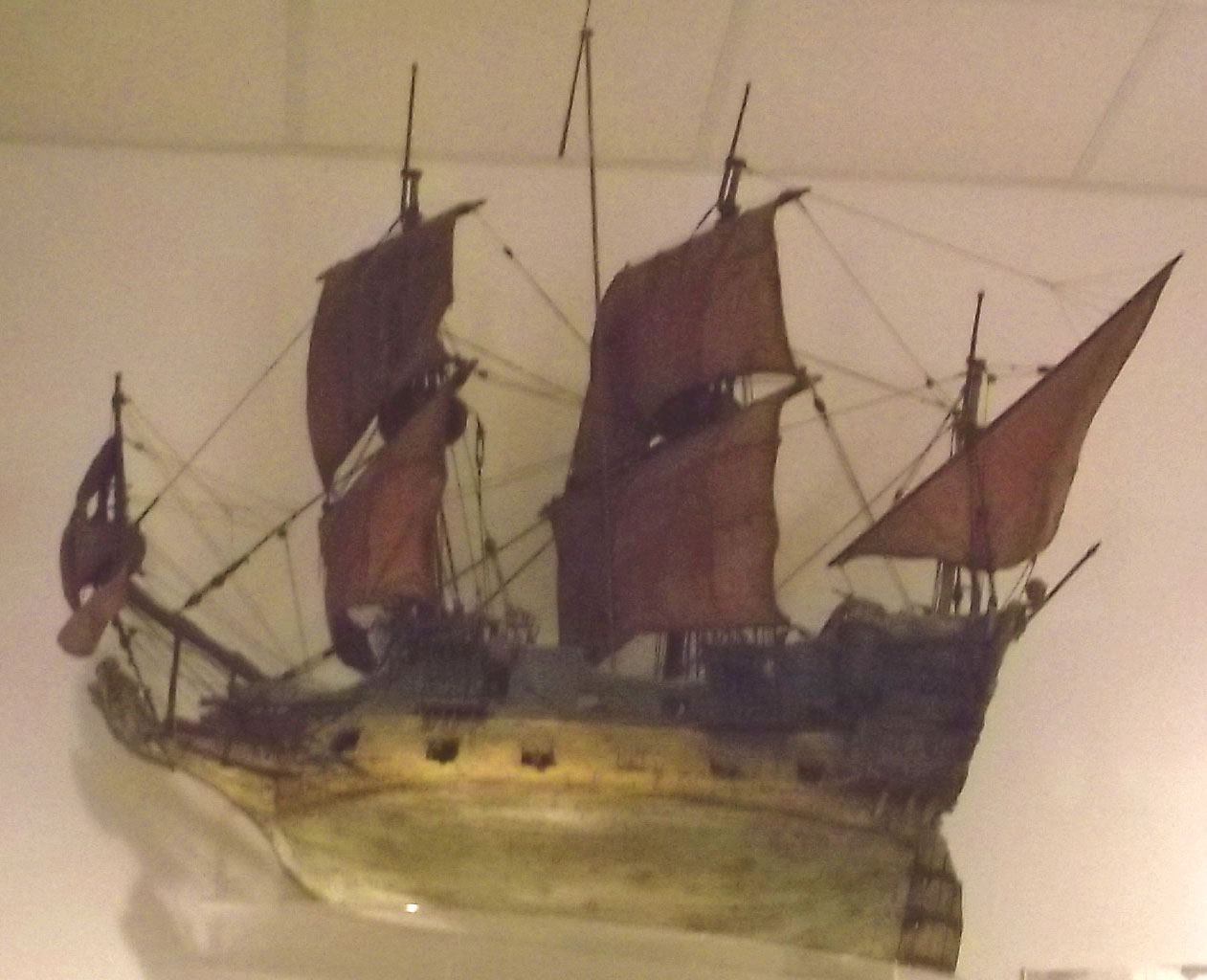
The first of these two models is a model of Half Moon. It was a Dutch merchant ship and was built by Mr. Versteeg at Antwerp, Belgium. She has four flags on her; the flag of Amsterdam, the flag of the East India Company, an orange, white and blue flag, and the Dutch flag. The Dutch East India Company hired English explorer Henry Hudson to set a passage to the East and gave him Half Moon for his travels.
The second ship is from the 16th century, and is a votive model of a Spanish galleon and was found in an ancient chapel in the hills of Spain near Burgos. This ship had a fat hull which was pierced for 22 guns and had a gold painted figurehead on the front. The model shows the ship’s high stern which mounts two ancient lamps and the Spanish flag with a Rampant lion, just below the latticed poop deck with a carved and gilded female figure. On this model the sails had the most damage and needed restoration when we acquired it. While it is unknown who found the votive ship model, we do know that it was in a church. A votive ship was a type of religious offering that was made by sailors to God (or a saint) if his prayer for safety at sea was answered. The model ship would hang in a church as an offering of appreciation. This model is one of the oldest model ships in America today.
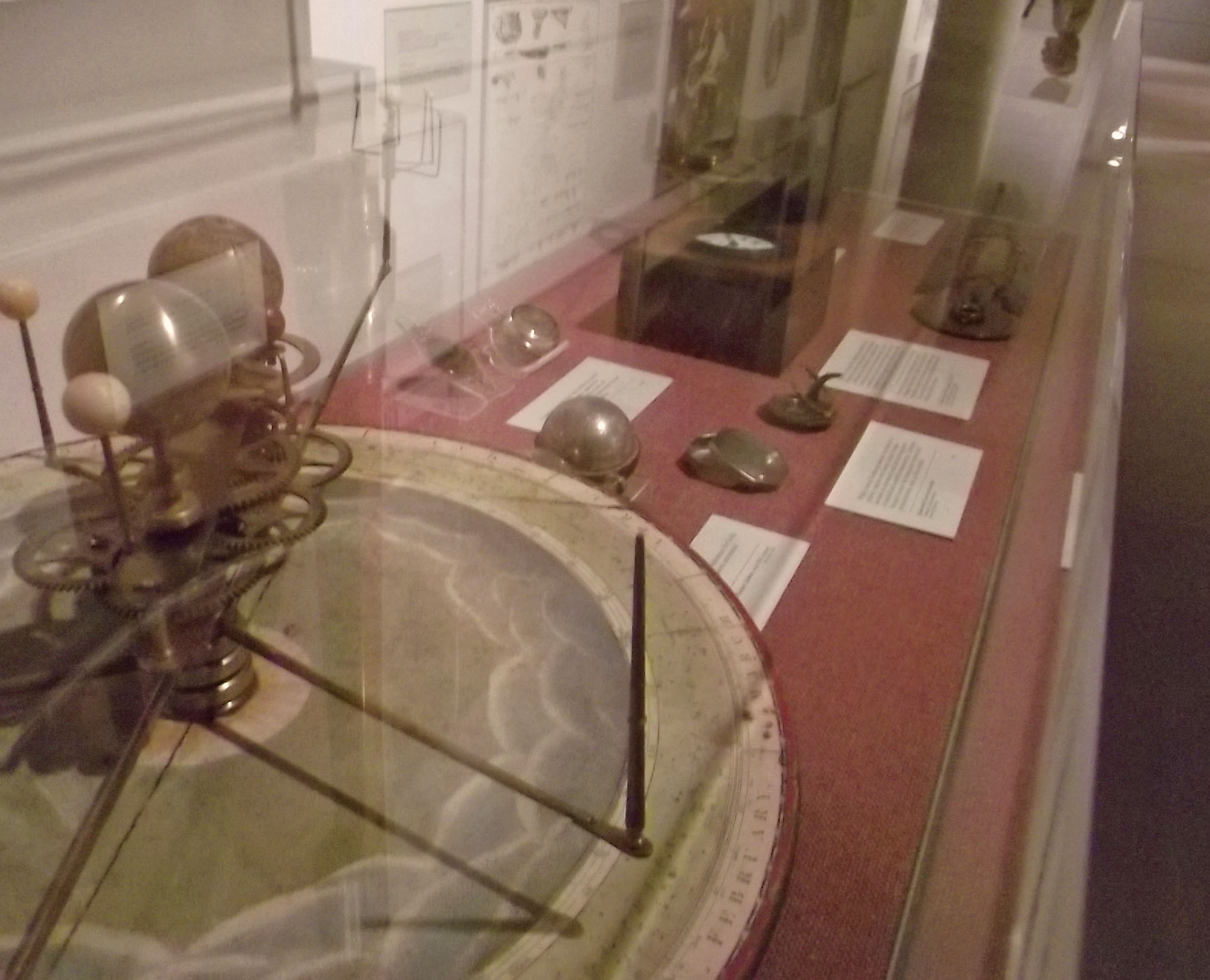
The Age of Exploration also so has a great collection of maritime tools from 15th, 16th and 17th centuries. The picture above most clearly shows an orrery. An orrery was used to demonstrate the relative positions and motions of the planets. The case featured also has a pocket globe, which was used as a reference for celestial, navigational, and known terrestrial information. In the far back of the display is a watch, a chronometer and an octant, all of which were essential tools at sea.
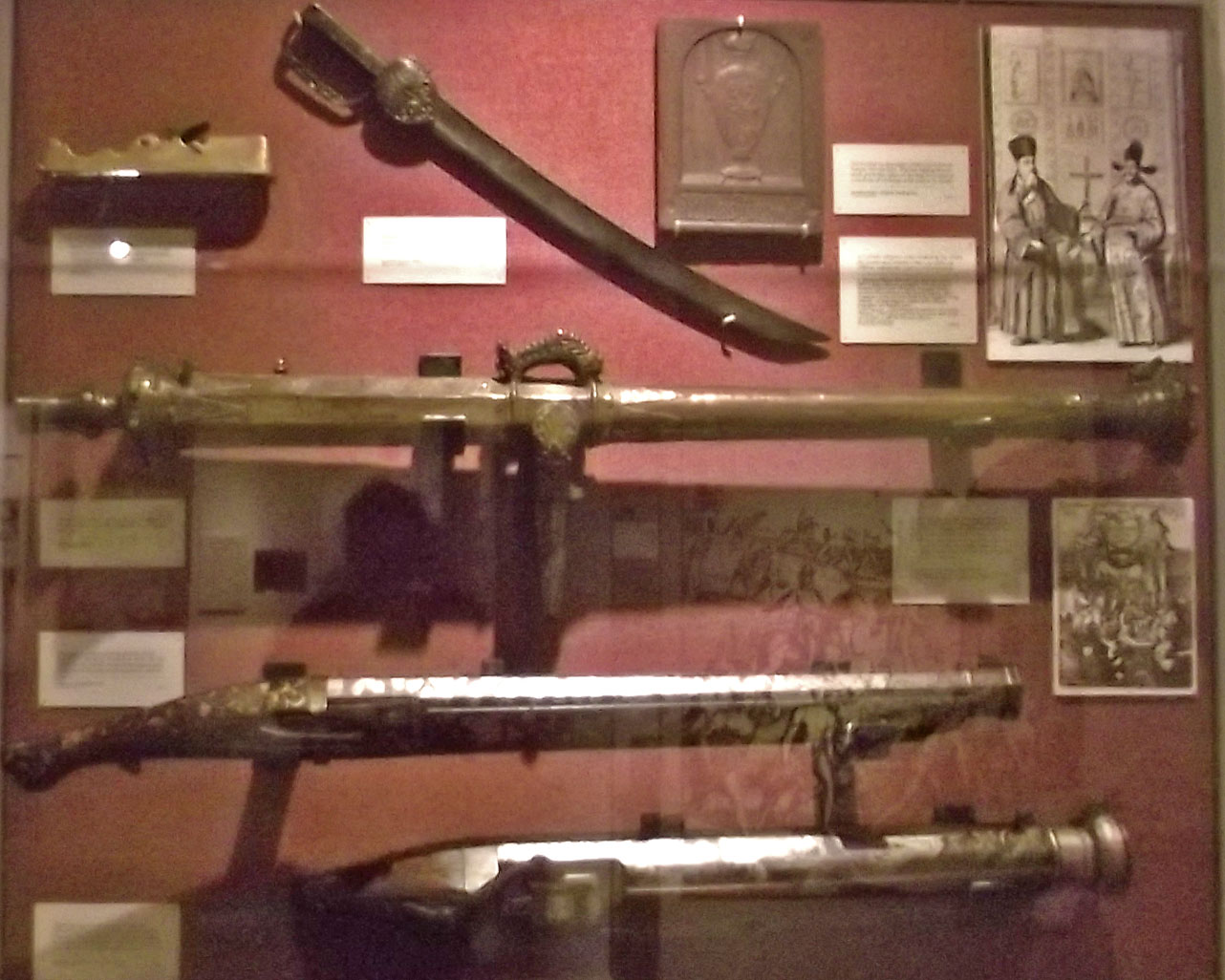
One of my favorite displays in the exhibit is this impressive collection of weaponry. Each of them are beautifully crafted with detailed decorations. The very bottom weapon is a 3-pound British naval carronade from around 1810. These were required on merchant ships for protection against pirates, giving them the nickname “insurance cannon.” The weapon directly above that one is a Japanese Matchlock Hand canon, circe 1800-1860. This particular one is an abnormal design, but it has a wooden stock and an iron barrel with an elaborate inlay of decorations. The third from the bottom is called a Lantaka and dates from around 1650. It originated in China and was used by the Arabs, the Moro, in India and by Philippine pirates. The final weapon is a 17th century Spanish Navy Cutlass. It was a type of hanger, which was a type of sword that was worn by naval officers in the 17th and 18th centuries. During this time weapons, swords and guns alike, were weapons of conquest and used as trade items between Europeans and natives.
I really enjoyed my time in the Age of Exploration. This exhibition featured a lot of great artifacts and information! This was a great way to bring my internship to a close, but first I want to do another in depth tour of The Nelson Touch.